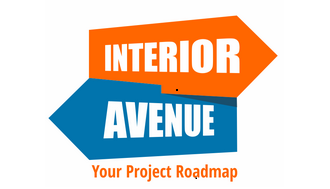Exploring the Endurance of Hybrid Work
In the evolving landscape of modern employment, the hybrid work model has emerged as a pivotal element, reshaping traditional workplace trends and setting new standards for the future of work. The recent Gallup report 2023 underscores this significant shift, highlighting how businesses and employees worldwide are adapting to a blended approach that seamlessly integrates remote work and in-office duties. This transformation, catalyzed by unprecedented global events, marks a turning point in how we perceive and engage with our professional environments, paving the way for a more flexible, efficient, and employee-centric work culture.
Adoption and Adjustment to Hybrid Work
As the hybrid work model cements its place in the modern workplace, organizations are swiftly adapting to meet its unique demands. This shift involves a strategic redesign of workspaces, ensuring they are not only appealing but also highly functional for employees who divide their time between home and office. By equipping these spaces with the necessary tools and technology, companies are creating environments that support both collaborative and independent work. This approach is crucial in maintaining productivity and employee satisfaction in a work culture that increasingly values flexibility and autonomy.

Employee Perspectives and Work-Life Balance
The hybrid work model has revolutionized employee perspectives on work-life balance, emerging as a substantial perk of this modern work arrangement. It grants employees the flexibility to blend their professional and personal lives more harmoniously, reducing stress and enhancing overall well-being. However, this model also presents a challenge in terms of limited access to office resources and in-person collaboration, which are more readily available in a traditional office setting. To bridge this gap, companies are innovatively designing their office spaces, focusing on aesthetics and functionality that mirror the comfort of home while still fostering a productive work environment. This thoughtful approach helps in maintaining a balanced and supportive workspace for employees.
Shift in Work Patterns
The global pandemic has been a catalyst for a significant shift in work patterns, marking a transformative period in the professional landscape. From January 2019 to May 2023, there has been a remarkable increase in remote work, growing from 8% to 29%, and an even more notable surge in hybrid work, rising from 32% to 52%. Concurrently, traditional on-site work experienced a steep decline, plummeting from 60% to just 20%. This trend points towards a stabilization of work patterns, with a clear inclination towards hybrid and remote models, suggesting a long-term change in how and where we work.
Company Policies and Employee Productivity
In the evolving hybrid work environment, companies are implementing diverse policies to govern in-office work frequency, with some opting to increase the average in-person workweek. This approach is tailored to balance the benefits of remote work against the traditional office setting. While there are concerns about potential dips in productivity with remote work, many managers are beginning to acknowledge its advantages. This recognition includes the potential for increased productivity due to the flexibility and reduced stress levels that off-site work can offer. As a result, businesses are actively seeking a sweet spot in their policies that maximizes employee output while accommodating the new work dynamic.

Work Environment Enhancement
In the pursuit of an optimal hybrid work model, enhancing the work environment has become a key strategy for companies. This enhancement includes integrating modern, ergonomic furniture and utilizing artificial intelligence (AI) for automating mundane tasks, thus making the office space more appealing and efficient. Moreover, the design of office spaces now increasingly features breakrooms, collaborative areas, and private spaces. These areas are thoughtfully included to mirror the comfort and flexibility of remote work, thereby contributing to a better work-life balance for employees. Such improvements not only elevate the aesthetic appeal of the workplace but also significantly boost functionality and employee satisfaction.
In conclusion, the hybrid work model represents a pivotal shift in the professional landscape, offering a balanced blend of remote and in-office work. This model has gained momentum due to its ability to improve work-life balance, enhance employee satisfaction, and maintain productivity. Companies are adapting through diverse policies, workspace enhancements, and technology integration, indicating a deep understanding of the model’s importance. As work patterns continue to evolve, the hybrid model stands out as a key component in shaping the future of work, reflecting the growing preference for flexibility, efficiency, and employee-centric approaches in our ever-changing work environment.
For fast and affordable office furniture consider partnering with Interior Avenue. We will help your business with cash flow. Our project roadmap makes it easy for your business. We have 3 options to buy:
Purchase upfront– Pay upfront for your office furniture to be delivered and installed.
Rent to own– We help you break up the payments to help with cash flow. This service includes delivery and installation.
Subscription rental– Monthly payments that include delivery and installation and when your subscription is over we will take back the furniture and move it out of your office space for free.





Leave a reply